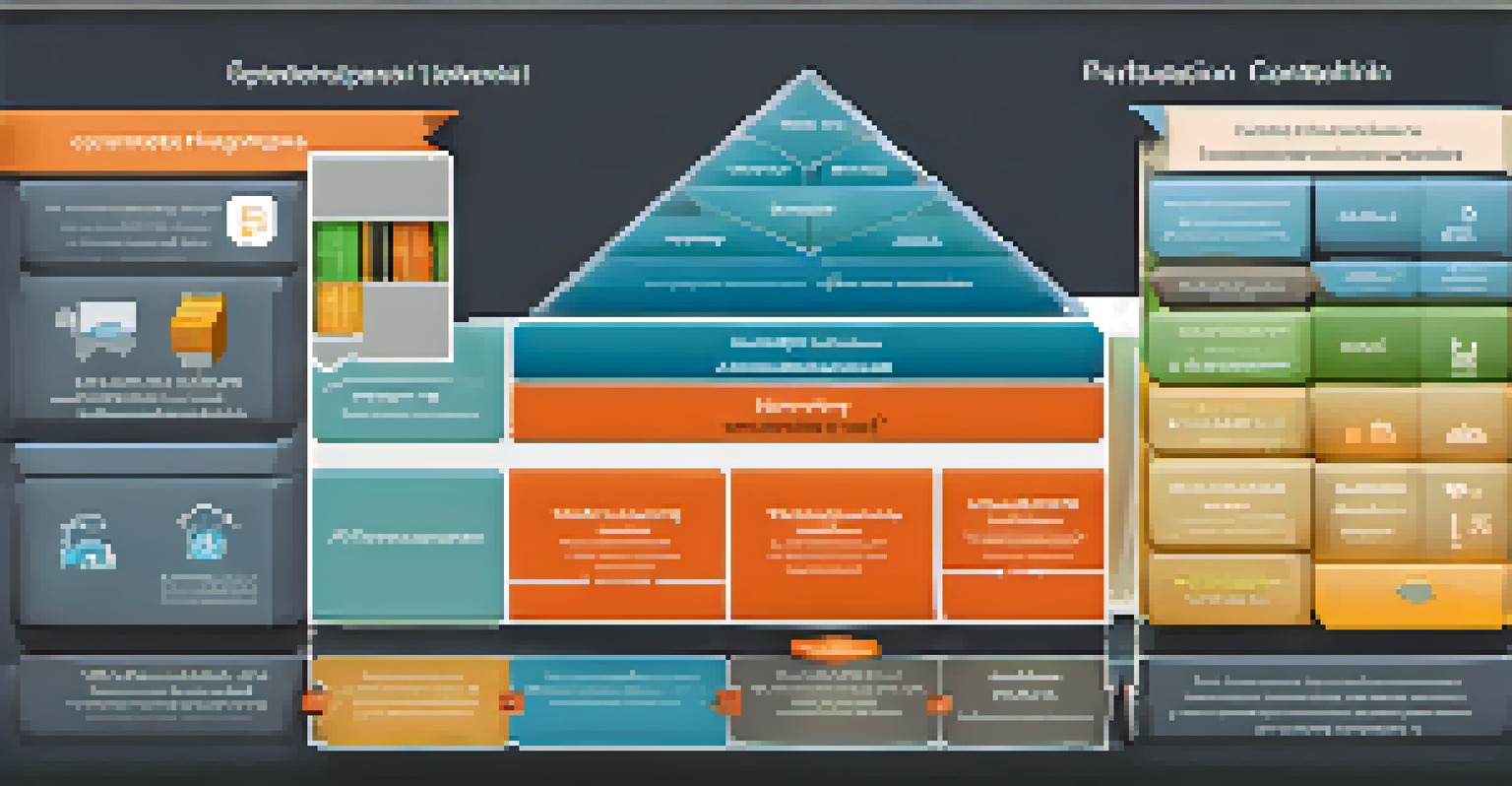Containerization vs. Traditional Deployment: A Comparative Study

Understanding Containerization and Traditional Deployment
Containerization is a modern approach to software deployment that packages applications and their dependencies into containers. This allows developers to run applications consistently across various environments. In contrast, traditional deployment often involves installing applications directly on servers, which can lead to conflicts and inconsistencies.
Containerization allows you to package your application and its dependencies in a single object, making it portable and consistent across multiple environments.
Think of containerization like a shipping container that holds everything needed for a journey. It ensures that regardless of where it’s delivered, the contents are intact and function properly. Traditional deployment, however, is akin to loading cargo directly onto a ship; it’s more susceptible to damage and mishaps along the way.
By understanding these two approaches, we can begin to see how they impact development processes, scalability, and overall efficiency in deploying applications.
Advantages of Containerization in Modern Development
One of the standout benefits of containerization is its portability. Containers can run on any system that supports the container runtime, making it easy to move applications between development, testing, and production environments. This flexibility minimizes the dreaded 'it works on my machine' problem.

Additionally, containers are lightweight compared to traditional virtual machines, allowing for faster startup times and more efficient resource usage. Imagine being able to start your application in seconds instead of minutes; that’s the power of containerization.
Containerization Enhances Portability
Containerization allows applications to run consistently across different environments, minimizing compatibility issues.
Moreover, container orchestration tools like Kubernetes enhance scalability, automatically managing and scaling applications based on demand. This capability is crucial for businesses that experience fluctuating traffic patterns.
Limitations of Containerization to Consider
While containerization offers numerous advantages, it’s not without its challenges. One major concern is the learning curve associated with adopting container technologies. Development teams may need to invest time in training to effectively utilize container orchestration tools and best practices.
In the world of software development, the ability to adapt to changing requirements and environments is crucial, and containerization offers that flexibility.
Security is another critical aspect; containers share the same operating system kernel, which can create vulnerabilities if not managed properly. It’s essential for teams to implement stringent security measures to protect their applications and data.
Furthermore, while containers are great for microservices architecture, they may not be the best fit for every application, particularly legacy systems that require a more traditional deployment approach.
Benefits of Traditional Deployment Methods
Traditional deployment methods have their own set of advantages, particularly for organizations with established workflows. For example, businesses with legacy applications might find it easier to stick to traditional deployment practices rather than overhauling their systems to fit a container model.
Additionally, traditional deployments can offer a more straightforward path for compliance and regulatory requirements, as the infrastructure is often easier to audit. This simplicity can provide peace of mind for organizations operating in heavily regulated industries.
Traditional Deployment Offers Simplicity
For organizations with legacy systems, traditional deployment methods can provide a more straightforward and compliant approach.
Moreover, for smaller applications or teams, the overhead of managing container orchestration might not seem justified. Sometimes, sticking to a simpler deployment model can be more efficient and cost-effective.
Challenges Associated with Traditional Deployment
Despite its benefits, traditional deployment comes with significant drawbacks. One of the most prominent issues is scalability; adding new servers can be a tedious process that slows down development and deployment timelines. In contrast, containers can be spun up quickly to meet increased demand.
Additionally, traditional deployments often suffer from configuration drift, where discrepancies between environments can arise over time. This drift can lead to unexpected behaviors and bugs, complicating the deployment process.
Lastly, the resource-intensive nature of traditional deployments can lead to higher operational costs. In today’s fast-paced digital landscape, businesses are increasingly seeking more efficient, cost-effective solutions.
When to Choose Containerization Over Traditional Methods
Choosing between containerization and traditional deployment depends on various factors. If you’re working on microservices or cloud-native applications, containerization is typically the way to go. Its ability to facilitate rapid development, testing, and deployment makes it ideal for agile environments.
Moreover, if your team is looking to enhance scalability and efficiency, container orchestration tools can significantly streamline operations. This is particularly beneficial for organizations anticipating growth or fluctuating traffic.
Scalability Challenges in Traditional Methods
Traditional deployment can struggle with scalability, leading to slower development timelines compared to the rapid deployment capabilities of containerization.
However, if you’re dealing with legacy applications or require stringent compliance protocols, traditional deployment methods may still be the better choice. Assessing your specific needs will guide you in selecting the most appropriate approach.
Future Trends in Deployment Strategies
As technology continues to evolve, so too do deployment strategies. The rise of serverless computing and advancements in container orchestration are shaping the future of how applications are deployed. These trends promise to enhance flexibility and reduce operational overhead.
Additionally, as organizations increasingly adopt DevOps practices, the integration of continuous integration and continuous deployment (CI/CD) pipelines is becoming more common. This approach complements containerization, allowing for faster and more reliable software releases.

Ultimately, the future will likely see a hybrid approach where containerization and traditional methods coexist, each serving different needs within an organization. Staying informed about these trends will help businesses adapt and thrive in a rapidly changing technological landscape.